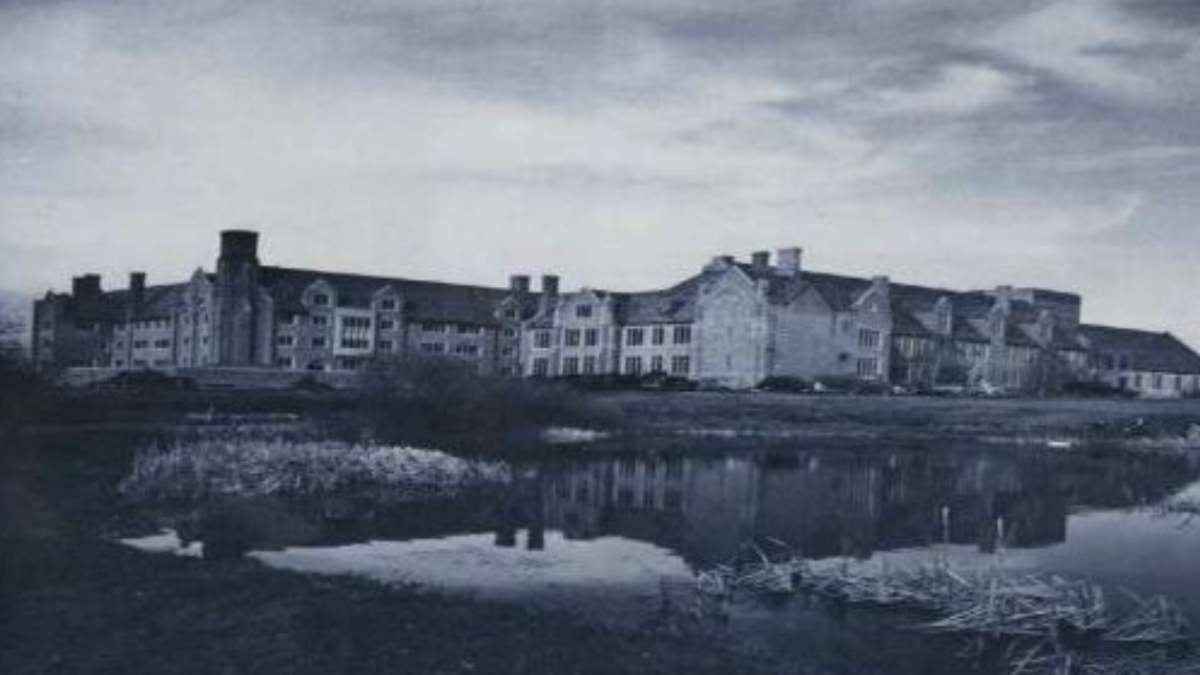Mercyhurst pursues inclusion on National Register of Historic Places

With its Collegiate Gothic Revival architecture, iconic wrought iron gates, Norman-style O’Neil Tower, and Our Lady of Lourdes Grotto inspired by the devotional in Lourdes, France, Mercyhurst University stands as a testament to historical grandeur.
Now, as Mercyhurst approaches its centennial in 2026, it is taking the necessary steps to be listed on the National Register of Historic Places, thanks to a Keystone Historic Preservation grant of $25,000 from the Pennsylvania Historical and Museum Commission (PHMC). The grant, which will be matched by Mercyhurst, allows the university to hire a preservation consultant to prepare the research and documentation necessary to place Mercyhurst among the ranks of the US Brig Niagara, the Cashier’s House, Erie Federal Courthouse, Watson-Curtze Mansion, the Charles Manning Reed Mansion (Erie Club), and an estimated 40 other Erie County historic sites.
As envisioned, the Mercyhurst National Historic District would be anchored by institutional cornerstones Old Main and Christ the King Chapel but will extend across much of the campus and include buildings erected into the late 1960s. Once listed, Mercyhurst would join a select group of institutions in Pennsylvania with expansive historic districts, led by the University of Pennsylvania and the University of Pittsburgh.
“We have always said, ‘Come visit our campus and you won’t want to leave;’ that’s how beautiful and inspiring a place it is,” said Mercyhurst President Kathleen A. Getz, Ph.D. “Within the walls of these historic buildings and on the grounds of this classic Mercyhurst landscape exist the realized dreams of the Sisters of Mercy, who founded us nearly 100 years ago. As we approach our centennial, and the unique opportunity to celebrate our heritage, being named to the National Register of Historic Places would be an honor worthy of their legacy.”
History Professor Dr. Chris Magoc of the Thomas B. Hagen Department of History and chair of the history committee for the 2026-27 Centennial Celebration, said, “We are deeply gratified that the PHMC has selected Mercyhurst to receive a Keystone grant. The exciting work that lies before us in establishing the Mercyhurst National Historic District will help ensure the preservation of the first century of Mercyhurst history embodied in our buildings and landscape. And because preservation always has an eye on the future, the Keystone award also affirms our conviction that our story will continue in perpetuity.”
In its application to the Pennsylvania Historical and Museum Commission, the university noted:
Mercyhurst University is positioned on one of the highest elevations in the City of Erie. From prominent locations on the 75-acre property, one can view much of the city, Presque Isle Bay, and Lake Erie. The foundational heart of the campus is Old Main, and the adjoining (to the east) Christ the King Chapel, and extending northward, Egan Hall. Designed by Philadelphia architect Francis Ferdinand Durang, Sr., the complex stands as a supreme example of Collegiate Gothic Revival architecture, possessing many defining features emblematic of the style. Dormer windows push upward into the roofline with the wing to the right being narrow and featuring a vertical Gothic arch. Facing south, O’Neil Tower possesses crenellation at the roofline suggestive of a Medieval castle. Finials flanking Old Main’s east entrance and piercing the roof further enhance that overall appearance. Less than 100 yards to the west of Old Main in a sloping wooded area lies the Our Lady of Lourdes Grotto. Inspired by the devotional Grotto in Lourdes, France, the Mercyhurst Grotto was constructed in 1932 in the depths of the Great Depression and has long been a spiritual landmark for Mercyhurst students, staff, and visitors.
Magoc said that upon recommendation of the State Historic Preservation Office (SHPO), the university will pursue a larger historic district boundary, including the Entrance Gates off East 38th Street (1950), Weber Hall and connecting concrete breezeway (1953), Preston Hall (1953), Briggs and Lewis Apartments (1950s), McCauley Hall (1959), Zurn Hall (1968), Baldwin Hall (1970), Hammermill Library (1971).
“For nearly 100 years, Mercyhurst has made invaluable contributions to the economic, cultural, and civic life of the region,” Magoc said. “The designation of much of our campus to the National Register of Historic Places will further elevate our standing within and beyond the region, while also helping to position the university for continued growth into the next century.”
The research and documentation process is expected to take about a year with submission expected in fall 2024.
In addition to Magoc, the project team includes Jeanette Britt, senior vice president for administration and chief operating officer; Bryan Colvin, archivist; Tom Fabrizio, physical plant director; members of the centennial historical subcommittee; and student interns. The university thanks state Rep. Bob Merski and state Sen. Dan Laughlin for their support.
In addition to the National Historic Register project, the centennial team is also conducting oral histories and creating a series of interpretive markers situated at various points on campus to augment the university’s historical significance.